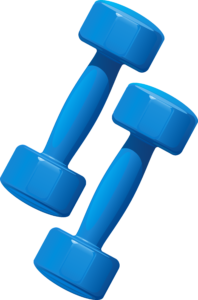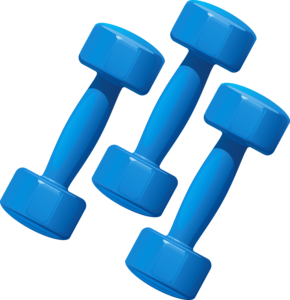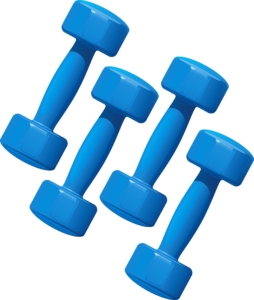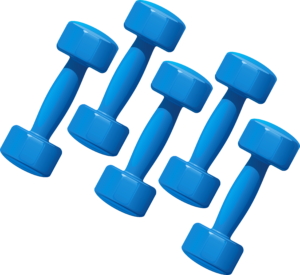Nick Rizzo was determined to motivate his parents to “ditch their sedentary habits and get more active” when they entered their 60s. As director of Training & Fitness at RunRepeat.com, a popular athletic shoe review site, Nick wanted his folks to appreciate the innumerable health benefits of strength training as they aged.
 “Inactivity is extremely dangerous for the 80 percent of adults who shun the physical exercise they need to keep them in good shape,” Nick said. It increases risk for serious health conditions including high blood pressure and cholesterol levels, heart disease, stroke, obesity, diabetes, metabolic issues, depression and death from any cause, he explained. Light walking isn’t good enough.
“Inactivity is extremely dangerous for the 80 percent of adults who shun the physical exercise they need to keep them in good shape,” Nick said. It increases risk for serious health conditions including high blood pressure and cholesterol levels, heart disease, stroke, obesity, diabetes, metabolic issues, depression and death from any cause, he explained. Light walking isn’t good enough.
To confirm the importance of doing more strenuous exercise like strength training as we age, Nick spent hours researching and reading over 200 scientifically backed, peer-reviewed studies. Hopefully, his list of 78 benefits will convince you to stop being a dumbbell, and pick up a dumbbell instead.
In the meantime, here are five key takeaways from Nick’s research:
![]()
Weightlifting is the most effective treatment to prevent, slow down, or partially reverse age-related muscle loss/sarcopenia.

Volunteers from 61 to 80 years old added 2.4 lbs of muscle from strength training and looked an average of five years younger.
 Lifting weights helps aging populations reduce risk factors for falls, improve functional independence, functional capacity, and quality of life.
Lifting weights helps aging populations reduce risk factors for falls, improve functional independence, functional capacity, and quality of life.

Weight training has been shown repeatedly in studies to reduce a wide variety of general aches and pains associated with aging, as well as many disorder-specific pains.
 Exercising only 20 minutes a day reduces the risk of early death by as much as 30 percent, and strength training twice a week reduces the risk of all-cause mortality by 46 percent.
Exercising only 20 minutes a day reduces the risk of early death by as much as 30 percent, and strength training twice a week reduces the risk of all-cause mortality by 46 percent.
“Strength training exercises work your muscles by applying a resistance against which the muscles need to exert a force.
We want the exercises to be functional movements so that the strength translates into our everyday lives and compound movements that help target the largest and most amount of muscle groups in a single movement,” Nick advised.
A typical beginner’s strength training program involves 8 to 10 exercises that work the major muscle groups of the body. “:You start with the basics and slowly work your way up to more advanced variations of an exercise. These exercises are usually performed two to three times every week,” Nick added.
To help get you started on a strength-training program, I asked Nick to recommend the five most powerful exercises and guidance on doing them properly. Today, we’re covering squats, and each week we’ll add one new exercise so no one feels overwhelmed.
THE SQUAT: NUMBER ONE STRENGTH-TRAINING EXERCISE
 Squats primarily target the lower body, helping you to develop stronger legs, as well as improve core strength and stabilizer muscles throughout your body.
Squats primarily target the lower body, helping you to develop stronger legs, as well as improve core strength and stabilizer muscles throughout your body.
The overall movement of the squat is the same, whether you’re doing it with or without weights. “I suggest starting with chair squats, which are simply squats where you’re sitting back until your butt is actually in a chair. This allows you to have that extra level of safety and reassurance while you learn to get comfortable with the movement. When you’re ready to graduate to the next level, remove the chair and work to develop a full range of motion doing bodyweight squats,” Nick explained.
Once you’ve mastered the movements Nick described, you can start to use weight, whether it’s a kettlebell, dumbbell, barbell, or even a jug of water. Adding weights will allow you to continue to develop greater and greater lower body strength that isn’t possible with bodyweight squats alone.
“Remember though, this isn’t a sprint. We want to take it slow, steady, and safely,” Nick wisely said.

